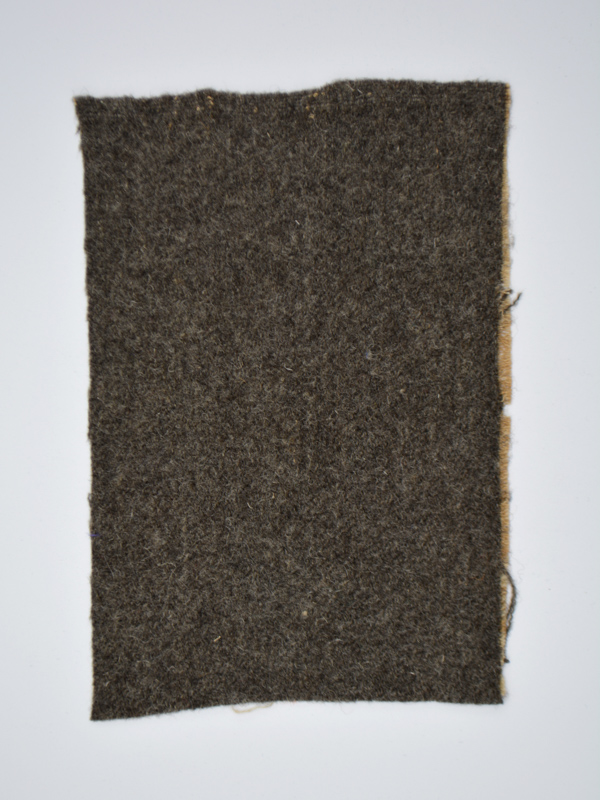Satinet Sample

Satinet Sample
Wool was the Island’s first, longest-lived, and most profitable cash crop. Sheep adapted well to the rolling pasturelands of Edgartown, West Tisbury, and Chilmark, and an adult sheep could produce two pounds of salable wool each year. Processing wool was a labor-intensive, multi-step process, but one that individual farmers and families could easily adapt to their individual circumstances.
Fiber processing was socially coded as “women’s work,” and households with many female members might choose to clean, card, dye, spin, and weave the wool from their sheep themselves, using the family’s labor to create a more valuable product that would bring higher prices at market. Knitting stockings, mittens, caps, and other useful objects from purchased or homespun yarn was a major cottage industry on the Island well into the nineteenth century. Home weaving to produce wool cloth for market was less common, but also significant.
Households with fewer female members, or different economic priorities, could sell the wool from their sheep to local or mainland manufacturers. A fulling mill — where water-powered machines processed wool cloth to give it a smooth, even surface — existed in Chilmark by the late 1700s. The woolen mill in West Tisbury, converted from a grist mill by David Look after he bought it in 1809, mechanized the entire process: carding, spinning, and weaving. It operated for more than 60 years, producing woolen cloth like this satinet, before competition from larger mills on the mainland drove it out of business around 1873.
DETAILS
| Artist | Manufactured by the West Tisbury Mill |
|---|---|
| Title | Satinet Sample |
| Date | 1859-1873 |
| Type | Textile |
| Credit | American Textile History Museum |
| Ref No | 2017.045.001 |
| Thematic Collection | 100 Years, 100 Stories: Turning a Profit |
